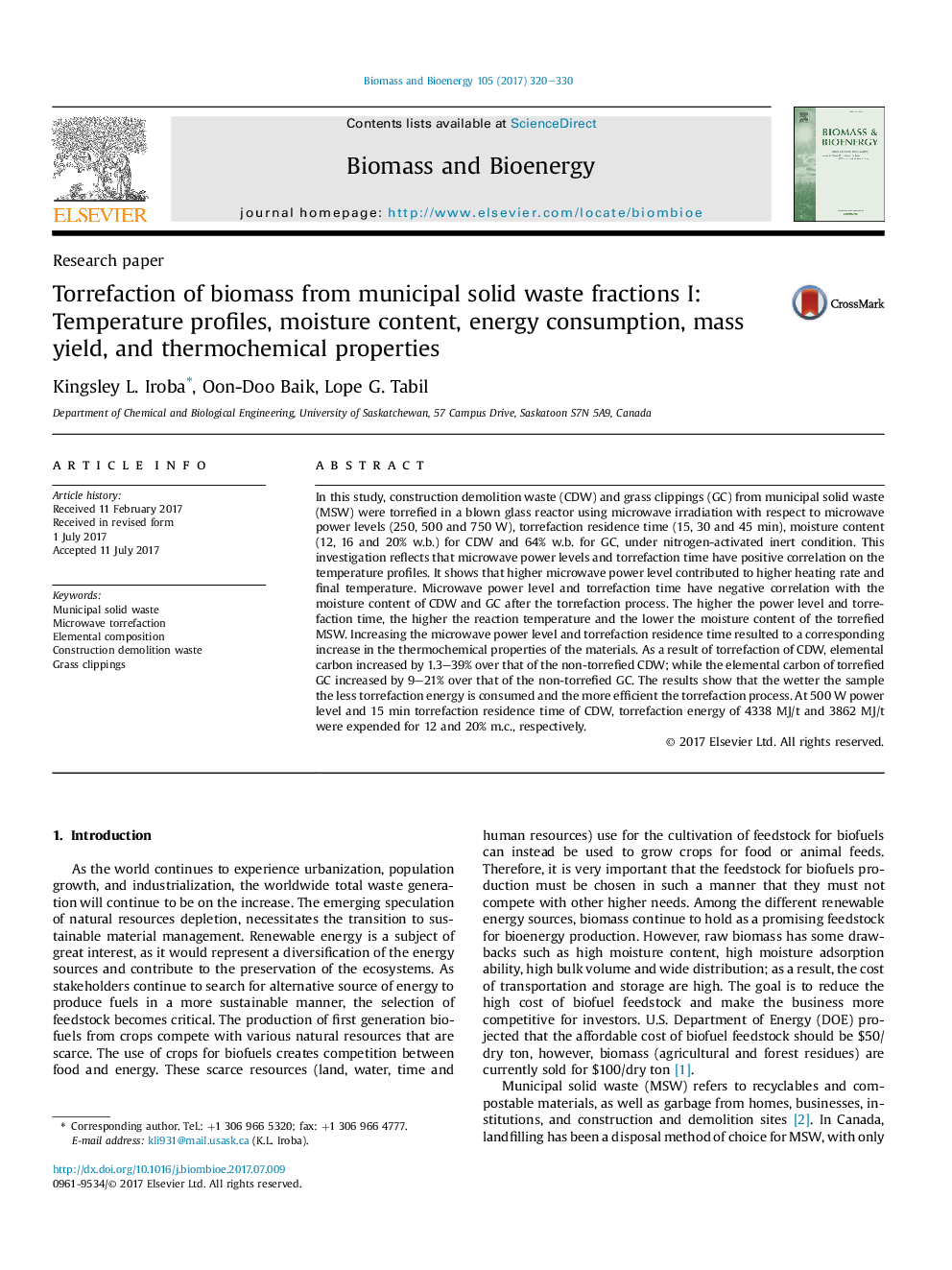| کد مقاله | کد نشریه | سال انتشار | مقاله انگلیسی | نسخه تمام متن |
|---|---|---|---|---|
| 4996170 | 1459788 | 2017 | 11 صفحه PDF | دانلود رایگان |
عنوان انگلیسی مقاله ISI
Torrefaction of biomass from municipal solid waste fractions I: Temperature profiles, moisture content, energy consumption, mass yield, and thermochemical properties
دانلود مقاله + سفارش ترجمه
دانلود مقاله ISI انگلیسی
رایگان برای ایرانیان
کلمات کلیدی
موضوعات مرتبط
مهندسی و علوم پایه
مهندسی شیمی
تکنولوژی و شیمی فرآیندی
پیش نمایش صفحه اول مقاله

چکیده انگلیسی
In this study, construction demolition waste (CDW) and grass clippings (GC) from municipal solid waste (MSW) were torrefied in a blown glass reactor using microwave irradiation with respect to microwave power levels (250, 500 and 750Â W), torrefaction residence time (15, 30 and 45Â min), moisture content (12, 16 and 20% w.b.) for CDW and 64% w.b. for GC, under nitrogen-activated inert condition. This investigation reflects that microwave power levels and torrefaction time have positive correlation on the temperature profiles. It shows that higher microwave power level contributed to higher heating rate and final temperature. Microwave power level and torrefaction time have negative correlation with the moisture content of CDW and GC after the torrefaction process. The higher the power level and torrefaction time, the higher the reaction temperature and the lower the moisture content of the torrefied MSW. Increasing the microwave power level and torrefaction residence time resulted to a corresponding increase in the thermochemical properties of the materials. As a result of torrefaction of CDW, elemental carbon increased by 1.3-39% over that of the non-torrefied CDW; while the elemental carbon of torrefied GC increased by 9-21% over that of the non-torrefied GC. The results show that the wetter the sample the less torrefaction energy is consumed and the more efficient the torrefaction process. At 500Â W power level and 15Â min torrefaction residence time of CDW, torrefaction energy of 4338Â MJ/t and 3862Â MJ/t were expended for 12 and 20% m.c., respectively.
ناشر
Database: Elsevier - ScienceDirect (ساینس دایرکت)
Journal: Biomass and Bioenergy - Volume 105, October 2017, Pages 320-330
Journal: Biomass and Bioenergy - Volume 105, October 2017, Pages 320-330
نویسندگان
Kingsley L. Iroba, Oon-Doo Baik, Lope G. Tabil,